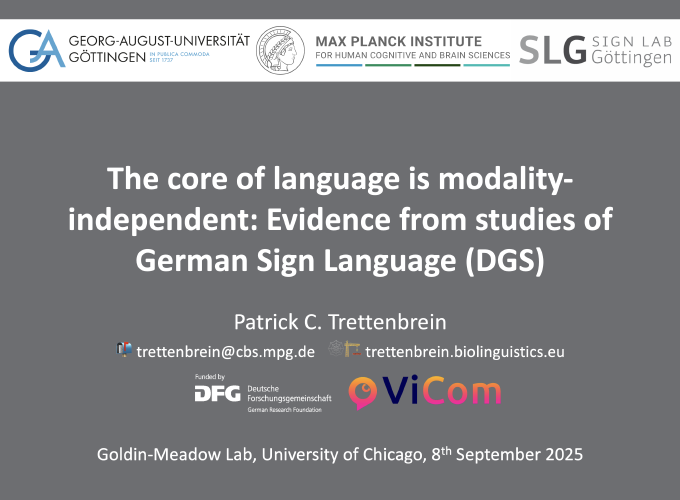The core of language is modality-independent: Evidence from studies of German Sign Language (DGS)

The core of language is modality-independent: Evidence from studies of German Sign Language (DGS)
Abstract
The capacity for language enables humans to flexibly link meaning to sound or sign by means of grammar. Significantly, the computations underlying this ability appear to be fundamentally abstract and therefore at least to an extent independent of the modality of language use (sign or speech). In this talk, I will present functional and structural data from magnetic resonance imaging with deaf native signers of German Sign Language (DGS) to argue that core aspects of language processing are subserved by the same primarily left-hemispheric fronto-temporal network, regardless of whether deaf native signers are using a sign language or hearing controls process their native spoken language (auditorily or in written form). Differences in white-matter pathways interconnecting language-relevant cortical regions resulting from deafness and sign language acquisition can primarily be observed only in the right hemisphere. Beyond these recent neural data, I will also discuss possible universals in adjustment behaviours when participants are processing a (sign) language they do not understand as identified in recent eye-tracking work, as well as some preliminary insights in modality-specific phonetic and morphophonological properties of the major lexical categories (i.e., nouns and verbs) in DGS based on classical linguistic elicitation data.